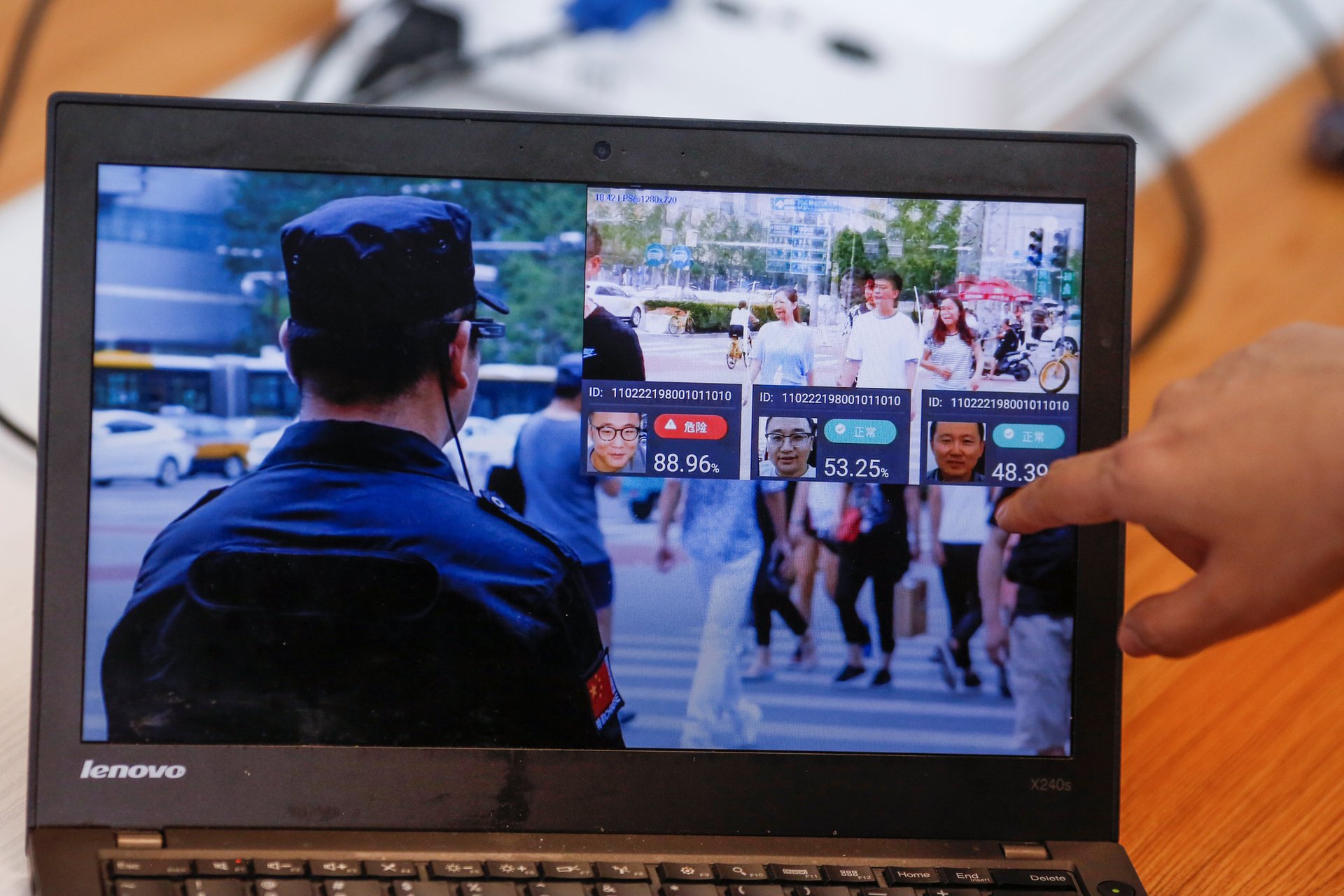Shanghai apartment buildings are secretly installing facial-recognition devices
Shanghai appears to be quietly—and secretly—installing facial-recognition devices in apartment buildings since last year. While the technology is widely used in China, this represents a worrying trend: the expansion of digital surveillance from public space to private ones.


Shanghai appears to be quietly—and secretly—installing facial-recognition devices in apartment buildings since last year. While the technology is widely used in China, this represents a worrying trend: the expansion of digital surveillance from public space to private ones.
Residents of the city’s Luoma Garden apartment complex told Chinese business publication Caixin that they had raised queries after noticing display equipment for advertisements being installed in elevators (link in Chinese) last month, according to a report from the outlet this week. The building’s management told residents that facial-recognition equipment had been put in place in coordination with the local police. Residents quoted in the report said that local police also confirmed to them that cameras with facial-recognition functions had been installed to help spot “suspicious” persons and prevent crimes. Quartz couldn’t reach the building’s management.
The report follows a complaint last year (link in Chinese) from another resident in the city posted on a Shanghai government website, complaining that the access card for their apartment complex no longer worked, and that the person now had to scan their face to get into their apartment building. They had received no notification beforehand. A response posted on the site suggests the move is part of a Shanghai public security program to shift apartment buildings to facial-recognition for access to the complexes, as well as in elevators.
“Such a big (campaign) to install facial recognition devices across the city has never been properly publicized by the government! Are you treating us like idiots?” wrote the initial complainant.
The Caixin report this week also drew alarm on social media. “Are we in 1984?” asked one Weibo user, referring to the dystopian George Orwell novel.
“Someone said this is to prevent crime, but we are already living under the massive network of surveillance cameras and being monitored, don’t you feel we are living under a horrible pressure?” wrote another.
Facial-recognition technology has become a new front in Beijing’s broader efforts to enhance its digital surveillance. From jaywalkers to payments to getting a new mobile phone number, the technology is being used in almost every corner of public life, with no way to opt out. In Hong Kong, fears about the similar use of the technology have prompted Hong Kong protesters to wear masks at protests, and to vandalize “smart” lampposts that they believed were used for surveillance. Hong Kong this month banned protesters from wearing face masks at rallies.
But the introduction of facial recognition in apartment buildings appears to be new. As of May, around one-third of Shanghai’s over 10,000 apartment complexes have been equipped such devices, according to Chinese newspaper Southern Weekly. Shanghai residents, according to the Caixin report, including those at Luoma Garden, said they were not informed by the government of plans to install such devices. Moreover, a technician installing the devices at Luoma Garden was quoted by Caixin as saying the equipment “were meant to look hidden.”
“The expansion of the Chinese government’s surveillance camera network is part of the Chinese government’s broader efforts to build a surveillance state in which people are monitored through multiple sensory systems, and where these systems alert the authorities of anything ‘unusual’ that warrants attention,” Maya Wang, senior China researcher at Human Rights Watch, which has many times raised concerns about the excessive collection of personal data in China, and its use to suppress dissent.
Wang added that current laws “do not provide meaningful protections against unlawful or abusive government surveillance… And there’s no specific law regulating the use of facial recognition.”
Apart from the issues of consent and privacy, it’s not clear the technology is even reliable enough for such uses. Shanghai Observer, a Chinese news app, reported this week that some Chinese primary school students managed to open “smart” lockers at their schools using photos of the locker owners.
While cities in the US and Europe have been far more cautious about using facial recognition, some residents in New York have found their homes embracing the technology as well, with little input from them, leading to at least one legal action. The city council is now considering legislation to govern how landlords and businesses use facial recognition (paywall) and other biometric data, including how to inform people that it is being used.
For years, the Chinese government has been collecting an increasing amount of data from its citizens, especially in its western Xinjiang region, where an estimated one million Uyghur Muslims have been forced to attend so-called “re-education” camps. Chinese police are also building a database that will be able to draw on information such as medical history and delivery records linked to people’s unique national identification numbers.
“Privacy rights are gateway rights: once you have no privacy, like it is in Xinjiang, you cannot freely express yourself, or even freely think your thoughts,” said Wang.